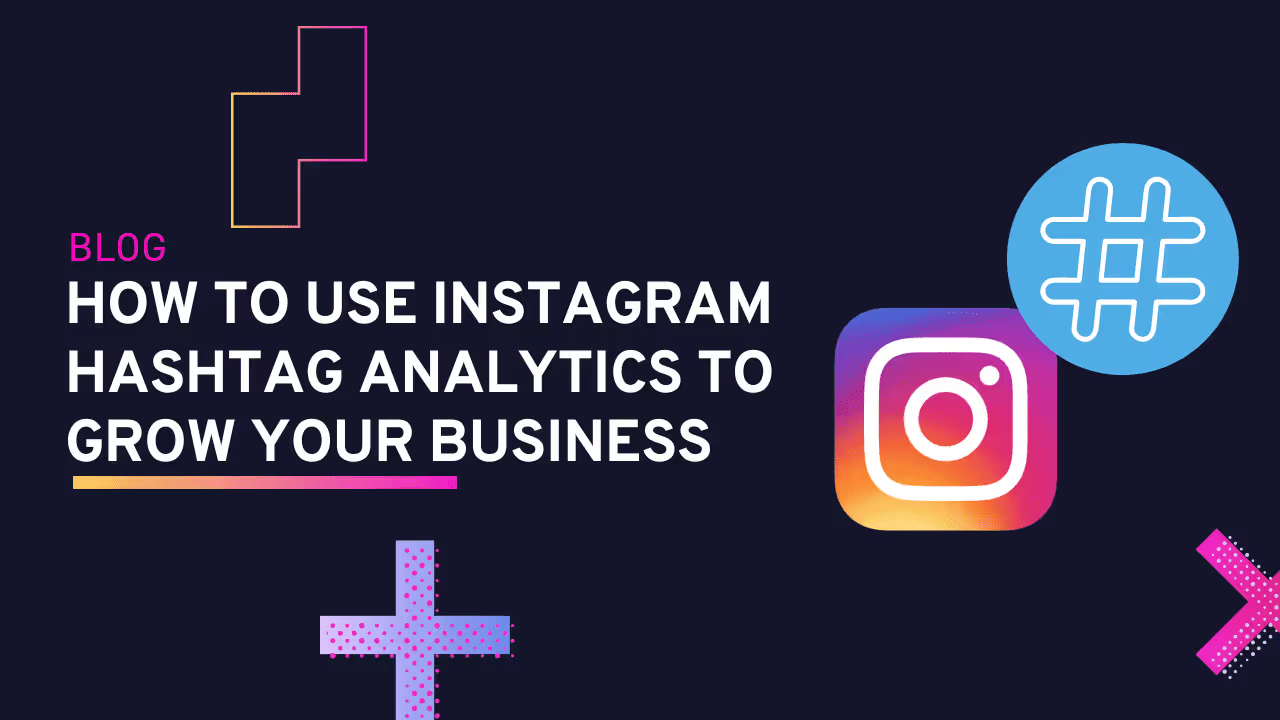Since 2010, when Instagram was introduced, hashtags have become increasingly popular. And there’s no doubt that Instagram contributed significantly to its growth. Now, many businesses use Instagram hashtag analytics to understand the performance of their content; thus, it has become an indispensable part of any Instagram marketing strategy.
And so, to grow your Instagram account — you need a collection of relevant Instagram hashtag analytics from how your users use them when interacting with your brand on the platform.
Furthermore, basing your decisions on data is vital, so you should not overlook it when growing your business on Instagram. You need to monitor your Instagram hashtag analytics with a hashtag tracking tool like Dataslayer to get the relevant stats for your marketing efforts.
If you’re into Instagram marketing, let’s look at how you can track your hashtag performance and how you may use these analytics to grow your business.
What is Instagram hashtag analytics?
Instagram Hashtag Analytics is a feature that lets you monitor the performance of hashtags on your posts or those of other Instagram users. You can use Instagram’s inbuilt insights feature to track your Instagram hashtag analytics or choose more analytical third-party tools for your reporting.
Who should use Instagram hashtag analytics?
Instagram hashtag analytics is ideal for anyone who uses Instagram for marketing. It may include:
- Companies growing their online presence
- Ecommerce stores
- SaaS businesses
- Influencer marketers
- Affiliate marketers
- Content creators like Bloggers, YouTubers, etc.
Why is hashtag tracking so important on Instagram?
The use of hashtags is now widely popular in social media marketing. There are many known benefits, more users understand its purpose, and almost everyone uses it. Your customers already use the hashtags you want to track on their posts, stories, or reels.
So, what are the main reasons it is crucial to track and monitor your Instagram hashtags stats? That is, why should you give your attention to Instagram hashtag analytics? Here’s the list of the possible reasons:
- Determine the extent of engagement for your hashtag campaigns
- Expand your post reach to increase brand awareness
- Grow your followers
- Discover your ideal time to post
- Spot top or potential influencers to partner in your industry
- Discover the trending hashtags in your industry
- Track your brand hashtag performance
- Understand a specific hashtag’s media sentiment
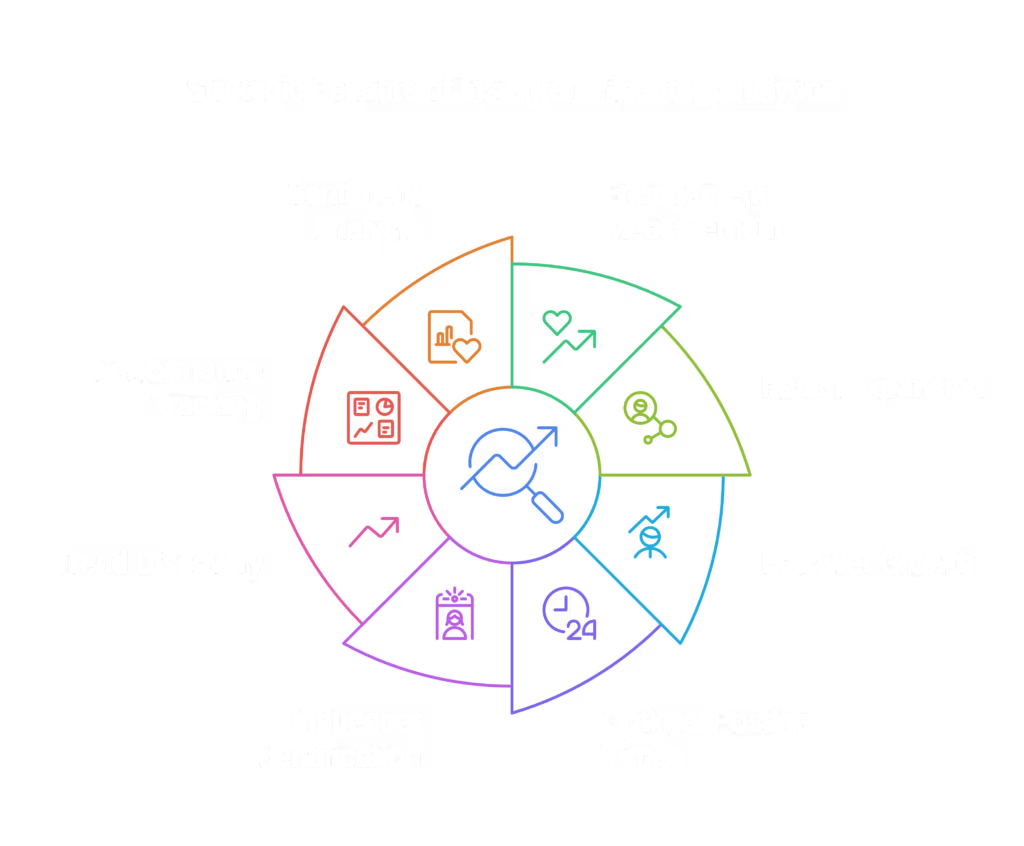
Top Instagram hashtag metrics you need to track
Hashtag Reach
The first important metric you need to measure on your Instagram hashtag analytics is the reach. That is, the number of unique Instagram users who saw your hashtag campaigns. Several factors can contribute to the success of your hashtag campaigns, and tracking them is necessary for you to understand those factors, innovate, and gain traction.
Ensure that you use relevant hashtags that your audience can quickly understand and resonate with to ensure that your hashtags get the success you need. Engage them with interesting polls, media content, and engaging posts while staying real on the platform. More importantly, use Instagram ads to boost your posts to reach more users.
Hashtag Impressions
After knowing how many unique users saw your hashtag campaigns, it is time to know how many total views each post received if users in our Reach metric saw it multiple times. Most often, many people confuse Reach with Impressions, as metrics from other platforms regard them as the synonyms, which are not.
The Reach metric on Instagram refers to the unique accounts that saw your accounts. The Impressions metric, on the other hand, refers to the number of times those users saw your post cumulatively.
For example, if 100 users saw your post three times each, your reach will be 100, but your Impressions will be 300. Under this metric, you can measure the impression-to-reach rates, the source of impressions (hashtag search, profile page, or home feed), and engagement levels (the higher the n impressions per user means higher engagement).
Engagement Rates
This metric is the ultimate metric that most businesses consider the top metric that they should track on Instagram and other social media platforms. It is the most critical metric to follow, as it outlines what your audiences do with your content. Do they share, like, comment, click, or get directions?
It should be obvious that you want this rate to be the highest. And luckily, a recent benchmark by Hootsoute shows that engagement rates for Instagram are way higher than that of Facebook: where Facebook had only 0.06%, Instagram had 0.68%.
There are several ways to calculate your engagement rate. However, make sure you stick to one to ensure you get consistent results for your Instagram hashtag analytics. Here’s a formula you can use to calculate your engagement rates for Instagram hashtag analytics:
Engagement rate = total engagements per post / reach per post * 100
Mentions
Instagram Mention is a critical metric of Instagram hashtag analytics that can effectively increase your content’s reach and ultimately grow your account.
Usually, users may tag a company by mentioning them on their posts, reels, or stories. They may be explaining who you are, sharing their testimonials, or discussing your products or services.
Mentions give users who will see them the ability to find your company profile with just a single tap. Therefore, when you get more mentions, you reach more users who may be your future customers.
Either way, knowing the number of users talking about you and your products or services and understanding the contexts of their mentions is the best way to know user's sentiment on your brand.
Influencers
If you consider diving into influencer marketing on Instagram, this metric can be your favorite when finding potential influencers. When you track Influential users in your industry, you can see successful influencers in your industry without asking them for their statistics.
Influencers on Instagram are based on several factors like the number of followers, engagement rates, post reach, and more. So, when you consider tracking influencers on Instagram, check those factors to see what will be worth your investment.
How to track Instagram hashtag analytics
Knowing what to track and the benefits of tracking your Instagram hashtag analytics is not enough — you also need to know the best ways to track them. As we have seen, using hashtags wisely can grow your account and boost your brand’s visibility.
The best part of Instagram hashtag analytics is that it is not a followers-only thing — every user on Instagram can view your content instantly. That is also another reason you need to track your hashtag stats on Instagram as your hashtag campaigns can rapidly grow to reach more users than you thought of.
While not all Instagram hashtags can be performing on a particular post story, or reel, you should keep monitoring their performance and those of your competitors to stay informed.
Monitoring the right Instagram hashtag analytics and making sense of the data requires significant research and analysis. You need to look at and evaluate several metrics such as audiences and user trends and measure their performance after the implementation of your hashtag campaign strategy.
It is necessary to monitor their performance if you will use them for your marketing campaigns. And the first thing you need to do to create effective hashtag growth strategies is to get relevant Instagram hashtag analytics data for your analysis.
So, how can you get the data for your hashtag campaign performance?
Simple. You can use Instagram Analytics feature or Dataslayer to get your Instagram hashtag analytics data for an in-depth analysis.
Using the Instagram Analytics feature
Instagram analytics is a new, free, and built-in feature for all business accounts to track the performance of their accounts and receive valuable insights from their hashtags. With this feature, you can track your content interactions, reach, impressions, engagement, and more for the last 30 days.
You can also see the numbers of followers and non-followers who interacted with your Instagram content and many other details about your hashtag performance. If you do not know how to access your Instagram hashtag analytics feature from your business account, here’s a short procedure:
- Open the post with the hashtags you want to analyze.
- Below it, tap View Insights
- Once the Analytics page opens, you can swipe up to get all the data for your post.
- To get hashtag details, go to Impressions, and you’ll find From Hashtags to get your details.
Limitations of Instagram Analytics feature
The Instagram Analytics tools lack some critical metrics. If you want to implement an advanced social media marketing strategy, you will probably need a more advanced Instagram hashtag analytics tool for a deeper analysis. And whenever you have the raw data, the possibilities of your data analysis become endless.
How to use Dataslayer as a hashtag analytics tool for Instagram
Dataslayer is a convenient, powerful, and easy-to-use Instagram hashtag analytics tracking tool that allows you to work on your Instagram hashtag data. Not only will you follow the engagement of your branded hashtags, but also you can get automatic refreshes and e-mail notifications of how others in your industry are engaging with your favorite hashtags.
There are ultimately so many benefits you can get when you use Dataslayer, and we are here to help you learn how you can use it today!
If this is your first time using Dataslayer, here’s how you can set up and analyze your hashtag statistics on Google Sheets:
How to set up Dataslayer for Google Sheets
To get started, install the Dataslayer add-on on Google Sheets. It’s simple; follow these three steps below:
- On Google Sheets, go to Extensions, then Add-ons, and click Get Add-ons.
- Next, search for Dataslayer, and click Install.
- Finally, accept all the necessary permissions and click Continue.
How to pull Instagram hashtag data with Dataslayer
After installing Dataslayer successfully, go back to Extensions, and under Dataslayer, click the Launch sidebar. Then, follow the following procedure to proceed:
To pull your Instagram hashtag data from your account, connect Dataslayer to your Instagram business account. To do that, on the data source tab, search for Instagram Public Data; click on it, and then sign in to your Instagram account.
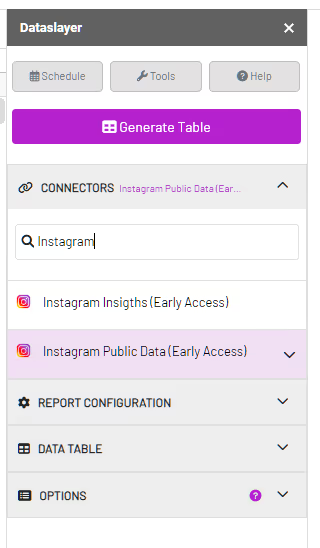
Next, fill out the following details:
- Under Report configuration, select the type of reports you want, including:
- Profile info for basic profile info
- Profile posts for reports on post-performance
- Post search for reports on certain hashtag data
- Then select the Metrics you want to analyze, like comments, likes, etc.
- You can choose the dimensions for rows or columns you want to use on your data, like post ID, Post Caption, etc.
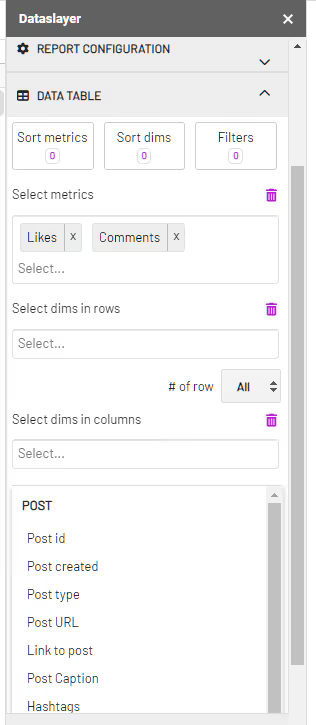
- You can also define Filter rules to get a part of your Instagram data.
- Finally, the Options tap allows you to apply advanced settings to your data.
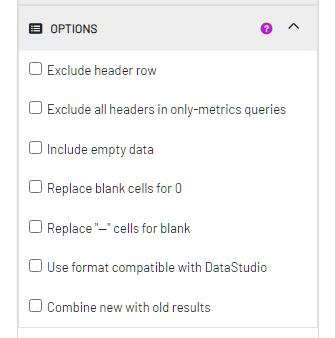
Once you’ve filled everything you need on your query, it’s time to source our data. Click Generate Table, and within seconds —- your data will populate into your table!
So, what next? Let’s discuss some useful queries to analyze your Instagram hashtag stats.
How can Dataslayer help you optimize your Instagram hashtag campaigns?
Let’s look at how Dataslayer can help you with your Instagram hashtag analytics campaigns:
Allows you to stay updated on trending topics and hashtags in your industry
Instagram users always come up with unique hot topics every day. Trends are commonplace nowadays, but the only problem is that they quickly come and go. So, keeping track of these topics will help you create relevant content for your hashtag campaigns while staying a step ahead from your competitors.
You will also get a chance to establish yourself as a thought leader in your industry with just a single query. So, how can you get these trends as early as possible?
That’s exactly where Dataslayer comes into play; Let’s look at the query to help you get started:
- Set your data source to Instagram Public Data, Report configuration to be Post Search, and enter the Instagram hashtags users are probably using, each separated by a comma.
- Under Post Search Type, select Recent to get the latest posts having your hashtags.
- To save your results whenever you refresh your query, tick the checkbox on the Options tab with Combine new with old results.
- Select the Metrics you want to add to your tables, such as comments and likes.
- Pick the Dimensions you want to split your rows or columns with. For example, you can use hashtags, post captions, and the number of hashtags.
- You can complete the other fields to suit your preferences. Like sort using likes to see what is trending.
- Finally, click Generate Table to get your data.
And there you have it — trending posts with your favorite hashtags sorted in order!
Help you to pry on your competitors’ hashtag performance
Learning what topics perform well with your competitors or industry experts is easier with Dataslayer. You can query your competitor's brand hashtags to see how users interact with them and how they perform.
Using Dataslayer allows you to monitor data that could only be available to your competitors. But how will you use or benefit from this information?
You can use them to see what hashtag ideas are more effective, get some other engagement tactics in one place, or see the best hashtag combinations for your market to improve Instagram hashtag analytics.
To get data specifically from one or more of your competitors, use the following configurations on the Dataslayer sidebar:
- Data source: Instagram public data.
- Report configuration type: profile posts.
- Instagram profiles: Profiles of your competitor(s).
- Metrics: Likes
- Dimensions: hashtags, post caption, and more as you like
- Configure the other settings to suit your preferences.
- Finally, click on Generate Table to get your competitor’s hashtag info.
See detailed engagement levels from your community
Learning how Instagram users engage with your brand is crucial to understand your community. The more engagement you get for your posts, hashtags, stories, or reels, the more you can influence potential customers to follow your brand to learn more about your products and services.
Getting raw data for your engagement rates on Instagram helps you see the actual stand of your account compared to those of your competitors. You will understand what users say about your brand, how they use your branded hashtags, and what content ideas create more engagement.
To get your hashtag engagement data with Dataslayer, you can use the following configurations for your query:
- Data source: Instagram public data.
- Report configuration type: Post Search.
- Instagram profiles: Your profile
- Post search type: Top
- Metrics: Likes
- Dimensions: hashtags, post caption, and more as you like
- Configure the other settings to suit your preferences.
- Finally, click on Generate Table to get your competitor’s hashtag info.
Dataslayer helps you to analyze your hashtag campaign performance
Want to know the impact of specific hashtags on your campaigns? Or which hashtag combinations work best? You can tweak your query to include only the hashtags you want to measure, then compare them separately to see which one is performing more.
Automate your queries and get email notifications to save you time and resources
Dataslayer lets you schedule refresh all your queries so you always have the latest data in your report. Learn how here:
Create a new Schedule by clicking the Schedule button at the top menu of the add-on, next to Tools and Help. A pop up window will open where you will be able to choose the frequence of the refresh, sheets you want to automate and if yo want to get an email every time the data is refreshed or just when it fails.

Final thoughts on Instagram hashtag analytics, performance, and monitoring
Instagram hashtag analytics is a great way to boost the performance of your account and increase your brand awareness. They are a key component of Instagram, and gradually, they're becoming necessary for increasing user engagement on the platform.
However, if you use Instagram hashtags blindly, it might as well be just not much better than using none in your campaigns. Luckily, as you’ve seen, it is easier to track your Instagram hashtag analytics and much more effective when you use it with Dataslayer.
In any way, we hope that this article helped you to grow your business with Instagram Analytics.


